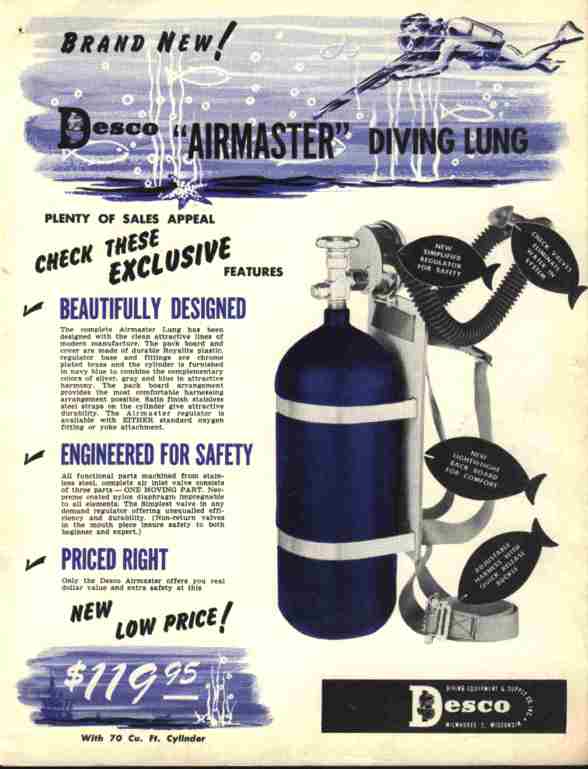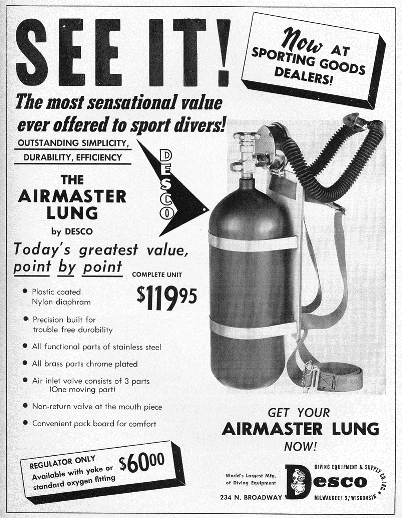Diving Equipment & Supply Company (DESCO) was formed in 1937 as the manufacturer of the newly designed diving equipment by Max Nohl and Jack Browne. John Craig collaborated with Nohl and Browne, and participated in the research and developments.
The first result of this collaboration was the forming of Diving Equipment & Supply Company (DESCO) as the manufacturer of the newly designed diving equipment. Mr. Norman Kuehn, a Milwaukee businessman, largely financed the new corporation. Browne and Nohl became its first full-time employees. Browne was also one of its shareholders. The company was set up in the rear of Kuehn Rubber Company on North 4th Street in Milwaukee. Norman Kuehn was made Vice-President of the firm.
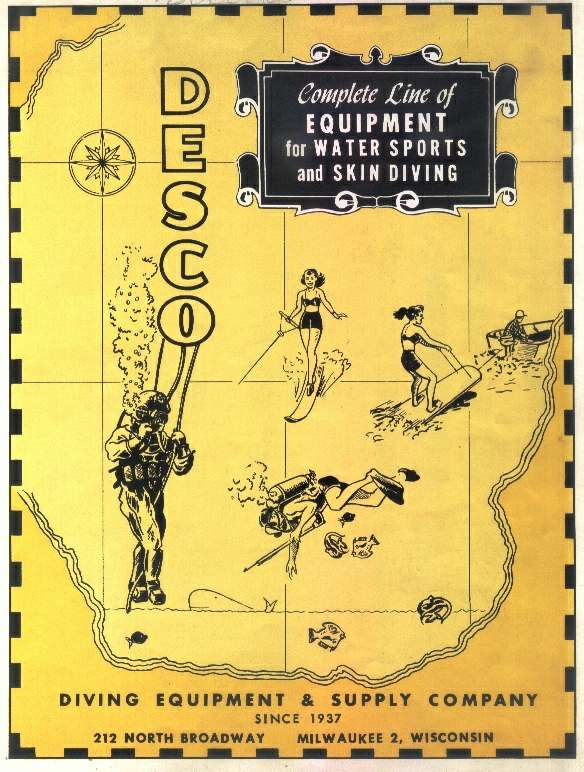
In 1945 the company named changed to Diving Equipment & Supply Co. The end of the war brought a slowdown in the diving market. Foreseeing this situation the company had begun moving into the recreational market. Products included search boards, water skis, masks, fins, the DESCO Airmaster SCUBA regulator, and recreational rebreathers. A sporting goods division is formed with J. F. Fulop as sales manager.
In May 1966, DESCO was purchased by Thomas and Marilyn Fifield. Mr. Fifield was an attorney and Mrs. Fifield served on several boards in Milwaukee. In 1968 DESCO moved to its present address at 240 North Milwaukee Street in Milwaukee. Mr. Fifield was responsible in the 1960’s for the design and development of the DESCO Diving Hat, which remains a standard piece of modern equipment for diving with air in relatively shallow water where mixed gases are not needed. Also the company has continued to improve and manufacture its famous DESCO Full-Face Mask, which originated in the early design efforts of Jack Browne and Max Nohl. This mask has probably been used in more total hours of commercial diving than any other piece of equipment ever made.

DESCO is a recognized resource for writers, artists, historians, and film makers. DESCO manufactured the helmets, weightbelts, control valves, shoes, and knives used in the movie Men of Honor.
The Desco Airmaster double hose regulator was offered for sale in 1955. Fred Roberts, that wrote the book Basic Scuba (wich became must have for many divers) in 1960, worked with Don Dorst to design the Airmaster. Fred then went on to set a depth record of 380 feet on compressed air.
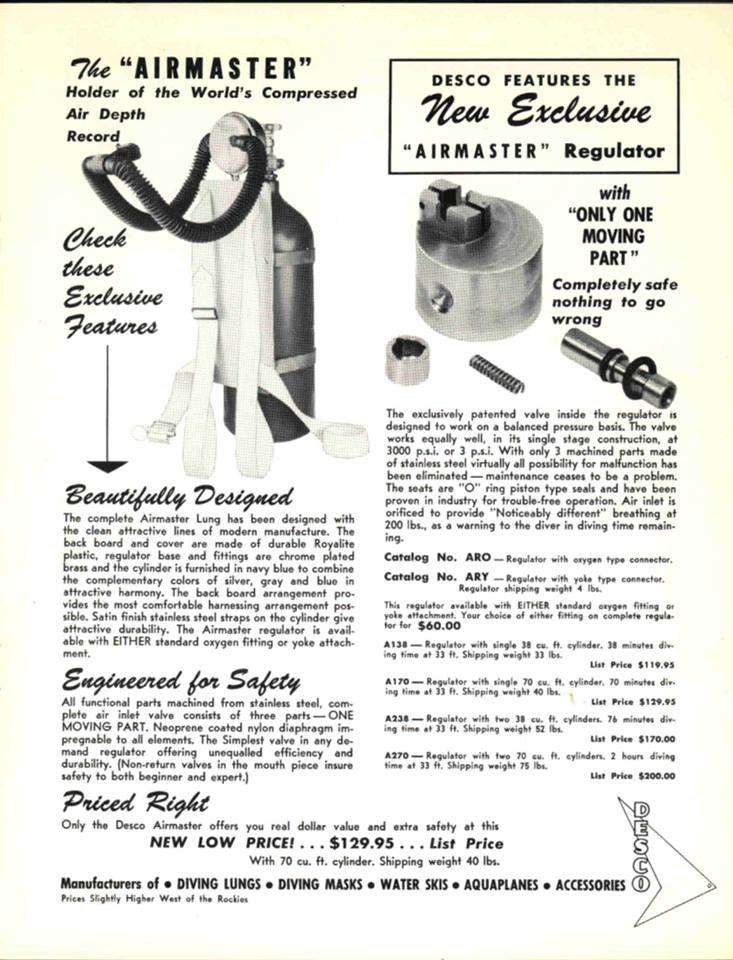
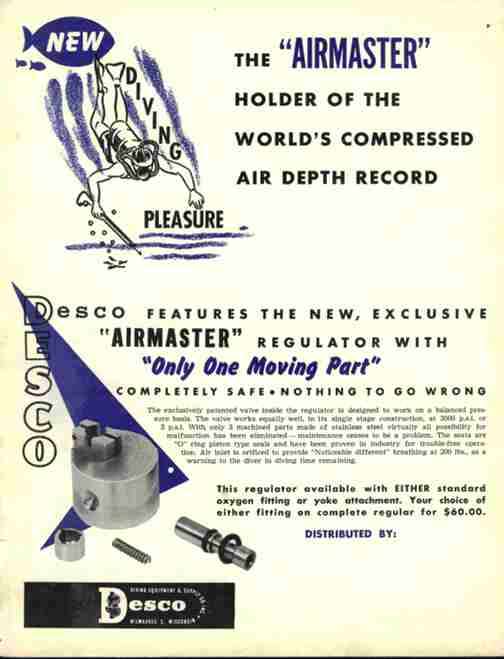
The Airmaster is a single stage, balanced piston, downstream valve, demand double hose regulator. Simple in construction, the regulator had the demand valve mounted in a cylindrical metal housing with a plastic cover. A flexible diaphragm created a dry chamber from which a corrugated hose fed air over the diver’s right shoulder to a mouthpiece and back over his left shoulder to exhaust air at the regulator case.
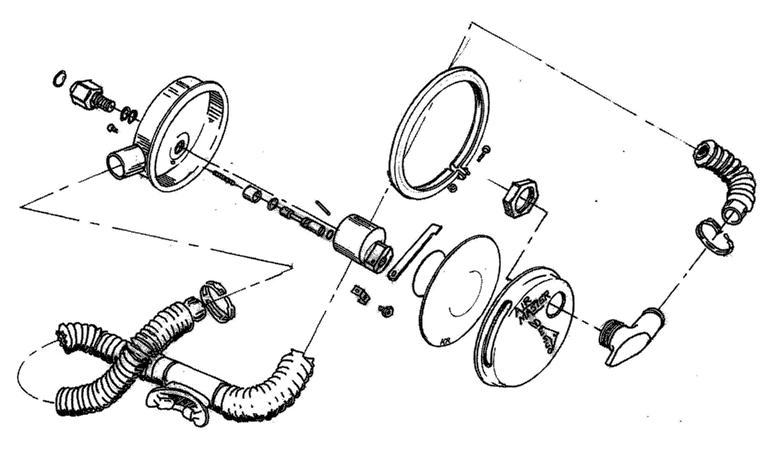
Desco created many advantages in adopting the single stage, balanced, coaxial flow piston design for their regulator.
It was the first one in USA.The valve body, the floating piston and piston sleeve were machined from stainless steel and needed only two “0” rings, one at either end of the piston, to control airflow. With the cylinder’s air pressure introduced into the center of the piston cavity the forces acted equally on both piston seals balancing the forces on the piston.
With the piston essentially free to “float,” only a minor spring force was needed to close the valve and an equally light inhalation effort was required to open it.
As the piston was unaffected by variations in the cylinder pressure, breathing effort remained uniform over the entire dive. Another benefit, was that a rather large valve seat area, and correspondingly greater airflow, could be employed without increasing the valve’s operating forces.

In the movement of inspiration the diaphragm depressed the demand lever and the piston. Air passes through the opened valve seat, through three passageways drilled in the piston sleeve to channel air from underneath the valve body.
The drawn brass and chrome housing offered a flange for mounting the diaphragm and cover with a “V” shaped clamp. The cover was made of thermosetting ABS Royalite plastic.
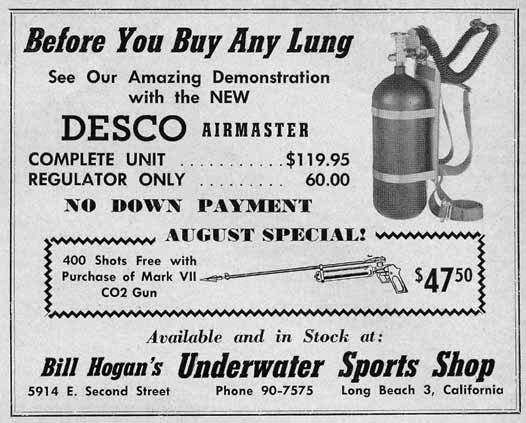
The regulator could be disassembled with a flat blade screwdriver and an 11/16″ wrench.
DESCO Mark 10 Diving Lung
The 1957 Water Sports catalog introduced the Mark 10 Lung. It appears it may have been a marketing change for the Airmaster from individual sales to a package sale. Notice the artwork for the Airmaster in 1956 is the same as the Mark 10 in 1957. The Airmaster first appears in the 1956 DESCO Water Sports Catalog.
The Desco double hose regulator model Air Master Mark 10 used black corrugated hoses with a conventional metal mouthpiece tee and non-return valves inserted into the hose convolutions nearest the mouthpiece.
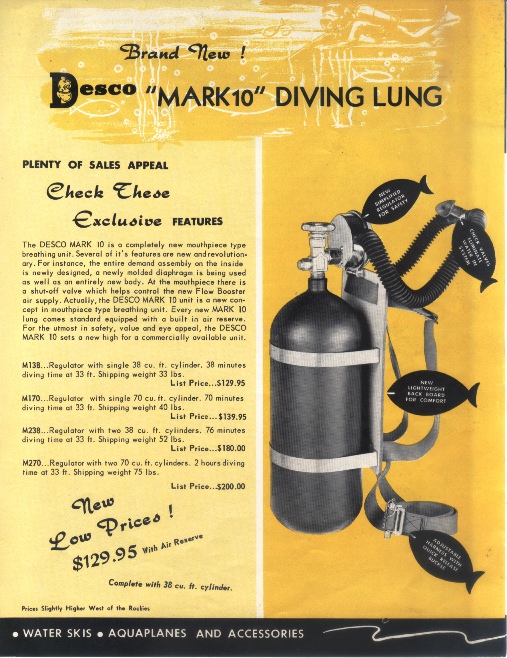
In 1961 DESCO developed a SCUBA tank pressure warning device. The Saf-T-Eye was a device fitted to the yoke on the SCUBA tank. A micrometer style dial on the valve allowed the diver to check the tank pressure before donning the tank by dialing down until the indicator light came on.
The diver would then set the device to a predetermined reserve pressure. When the tank reached that pressure the light would come on to warn the diver he had reached his reserve. The light was designed to be fitted to the Jack Browne DVM Mask, or any SCUBA mask of sufficient size.

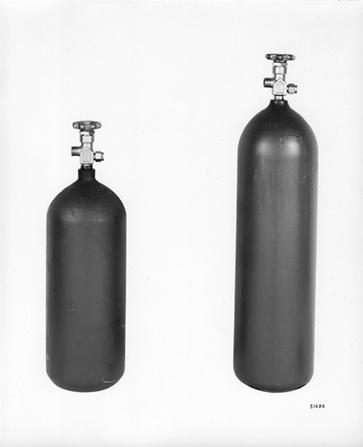
The Airmaster used a continuous hose and mouthpiece molding, while the last versions used Rory Page’s Hope-Page mouthpiece assembly.
The Airmaster was short lived due to some reliability issues and stiff competition from other manufacturers.
